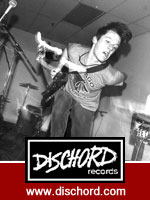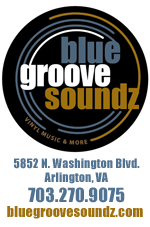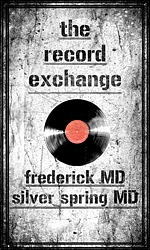So, I’m walking through the last DC Record Fair, records in one hand – pint in another, and I harken upon an ongoing conversation regarding Harry Nilsson and the Monkees between a vendor and a record buyer and I’m thinking to myself, “See…this is WHY we do these things. Where else can you stumble upon this smart discussion?”
So I wheedle in on the chat and I mention John Scheinfeld’s wonderful Harry Nilsson documentary, “Who Is Harry Nilsson (And Why Is Everybody Talking About Him?)”—an apt title if there ever was one—and lo and behold it turns out I’m talking to the winner of one of TVD’s giveaways for the doc earlier in the year. Small world, right?
We’re chatting even more in depth after this revelation and it turns out that our contest winner is not just a huge fan of Harry (and the Monkees) but is also a documentarian in his own right. And I get to thinking…hm. What bit of karmic goodness can be drawn from this surprise introduction?
Right.
TVD Interview Questions courtesy of Hubert Dobson:
TVD: How did you come to work on this project? Was it a project you sought out?
John Scheinfeld: I’d been a fan of Harry’s music since my freshman year at Oberlin College when I played his music on my morning radio show. His music was so original…filled with wonderful melodies, clever lyrics and, of course, great humor…and the things he chose to write about, so unique…and, of course, there was THAT voice..! I became a huge fan.
A few years ago Lee Blackman, Harry’s good friend and long-time attorney, had approached me about doing a documentary about Harry. I was intrigued, but knew very little about his life. So I started researching and the more I read, the more I became convinced that this was a remarkable story that had to be told. Harry’s career was as complex, exhilarating, maddening and inspiring as the man himself – and I felt it would make for a powerful and highly emotional film. In peeling back the layers of the Nilsson onion I found so many tantalizing, dramatic, tragic and hilarious aspects of a life. In other words, the foundation was there for a great story into which I could sink my documentarian teeth.
TVD: How did you first hear of Harry Nilsson’s music? Were you a fan of Nilsson’s music before you directed this documentary?
JS: On that morning radio show (6am-9am…ugh!) there were no playlists, so I could play whatever music I wanted. I was rummaging through the music cabinet and came across the cover of an album that caught my eye. It was Harry’s “Pandemonium Shadow Show.” Intrigued, I flipped it over and saw that one of the tracks was “You Can’t Do That.” Great, I thought to myself — another bad Beatles cover version. Which, of course, it was anything but…this was Harry’s brilliant blending of Beatles lyrics into a new creation of his own. I devoured the rest of the album…and then listened to his second…and third…albums and I was hooked.
TVD: The quality of archive film, photos and audio outtakes helps to paint a broad picture of the man and his music. Was there more material you were not able to access?
JS: In all my documentaries I always work hard to uncover as much rare and never-before-seen audio/visual material as possible. This task was made much more difficult for this film because Harry rarely appeared on television and never, ever, performed live in concert. So I needed every moment of Harry footage that I could find to help tell this remarkable story.
We scoured the world’s archives and the holdings of private collectors, as well as prevailing upon Harry’s friends and extended family who freely and generously shared their photos, home movies, private recordings and personal memorabilia. The response was awesome.
Micky Dolenz, for example, sent us home movies he took of Harry in 1967. Producer Chip Douglas share film he shot from 1973-1975. Extended family members, Gary Nilsson, Rainy Nilsson, Doug Hoefer and his wife Eonna, generously shared their rare and unseen photos and film. “Do it for Harry” became the mantra for everyone associated with the making of this film.
Amidst the incredibly rare footage are performances from two TV specials he made for the BBC, The Smothers Brothers Comedy Hour, and Beat Club, plus promo films, music videos and home movies. Also featured are clips from the Oscar winning film, Midnight Cowboy. Also, Sony Music (successor to The RCA Records Label for which Harry recorded) granted unprecedented access to its archive during the making of this film resulting in a treasure trove of photos, promotional films, master recordings, unreleased recordings, remixes and film elements that help bring Harry’s remarkable saga to life.
One story that always puts a smile on my face involves Hugh Hefner. I had called up Playboy Enterprises hoping to license Harry’s appearance on Playboy after Dark. The licensing woman who answered the phone had a real attitude and said something to the effect of, “Even if we would license this to you it would cost $12,000-a-minute and you can’t afford it so you might as well forget about it.”
Now, this is the wrong thing to say to someone like me (you’ve got to be persistent and sometimes relentless in this business). So I wrote a very passionate letter to Mr. Hefner (who I did not know) explaining what we were hoping to accomplish, why the clip was so important and pleading with him to help us out. We FedExed the letter to the Playboy mansion so we’d know he received the letter and three days later I got a call from the number two person in the Playboy empire. “Hef got your letter. He loves Harry, thought he was a great artist. You can have whatever you need…no charge. Hef was so generous and gracious and, eventually, screened the film at the mansion for his close friends.
Best of all, Sony gave us access to the raw footage from an unfinished documentary shot during the making of Harry’s 1972 album, Son of Schmilsson (with the incomprehensible title, “Did Somebody Drop His Mouse?”). We knew a rough cut of the film had been put together with narration provided by Harry and Richard Perry, but the film was never completed. We were given a computerized list of all film elements that were in storage deep within a vault in Pennsylvania. It was not very detailed but did offer a few tantalizing descriptions of the contents of each box.
When the boxes arrived on our second day at Sony we discovered rolls of negative, numerous reels of developed film and odd-sized strips of film lasting anywhere from a few seconds to a few minutes. We transferred about 10 minutes of this footage and, in gorgeous color, much of it appears in the movie. That said, I would certainly love to be able to get all the existing raw film and be able to put together a full-length documentary from the dozens and dozens of hours of film shot for that aborted project.
TVD: Do you think the musicians/actors interviewed for the film were were so forthcoming with very personal stories because Nilsson was so well-loved by those who knew him?
JS: First, this was the very first doc made about Harry, so it wasn’t as if our “cast” had been hit with countless requests to do interviews about Harry, so the subject matter was fresh for all of them. In many ways, getting such heavy hitters (Micky Dolenz, Terry Gilliam, Danny Hutton, Eric Idle, Al Kooper, Randy Newman, Yoko Ono, Van Dyke Parks, Richard Perry, The Smothers Brothers, Jimmy Webb, Paul Williams, Robin Williams and Brian Wilson) to agree to sit for interviews was easier on this film than for most others I’ve done.
Second, and perhaps most important, it struck me during the making of this film that everybody talkin’ about Harry really and truly loved him. They loved him for what he was…and for what he wasn’t…and it is that love that prompted so many people to want to be in the movie. That love is evident in every word they speak which is why, I think, so many people have said they found watching the film to be such an emotional experience.
TVD: Harry Nilsson’s music is similar to that of singer-songwriting contemporaries such as Randy Newman, Paul Williams, and Van Dyke Parks. What do you think that says about the time in which these artists came to proficiency as songwriters and performers?
JS: In so many ways, the 1960s was a time of experimentation, of pushing the boundaries, of developing singular artistic voices and giving them a platform from which to express themselves. This was certainly kicked into high gear following the musical explosion that was the Beatles. Suddenly, singer-songwriters were “in” and several record companies were known for discovering and nurturing talent with a fresh and unique perspective. Thankfully, RCA did that for Harry even as Warner Brothers was doing that for randy Newman, Van Dyke Parks and others. As the music business has changed since the 1980s, sadly, I don’t believe that same commitment exists today…which, of course, begs the question, would young Harry make it in today’s world? Now there’s a good question…
TVD: As a performer, Nilsson is most famous for “Everybody’s Talking” and “Without You”—songs he did not write. And some of the most successful songs written by him were made famous by other performers (Three Dog Night, The Monkees). Can you speak a little to the irony of that?
JS: It is one of many spectacular ironies of Harry’s life. As the great record producer, Richard Perry, says in the film, it can be explained by the fact that Harry was an incredible singer and a brilliant interpreter. So he could take Fred Neil’s “Everybody’s Talkin’” and Badfinger’s “Without You” (not to mention all the Randy Newman songs he covered) and make them his own. Harry knew a good song when he heard it and that’s an amazing talent unto itself.
TVD: What is the legacy of Harry Nilsson’s music and the influence it has on people making music today?
JS: Singer-songwriter…unique individual…good friend…loving husband and father…friend of the Beatles…Harry was all these things and so much more. I could go on and on, but I think it’s best and most appropriate to allow Harry’s friends to talk about his legacy. Here are several soundbites from interviews done for the film that for various reasons did not make the final cut:
“He should be remembered as the supreme singer of his generation, or any generation; a vastly underrated, but brilliant songwriter…”
—Richard Perry
“Harry’s like James Dean or other great artists who had very short, but very intense working lifetimes. I think he accomplished more than most other people, writers, singers, you know, will ever accomplish in their lifetimes, or 10 lifetimes.”
—Mickey Dolenz
“To me, just listen to the music. When I put on the music, Harry is alive. As long as the discs don’t rot, Harry will live.”
—Terry Gilliam
“So when he sort of wistfully said, “I guess I’ll just be remembered as the guy who sang, “Without You,” I think that was a tough thing for him – that he wanted to be remembered as a guy who created this great catalogue. And it is a great catalogue. If you listen to those songs, they’re unique. There’s nothing like them. There’s nothing like them…”
—Jimmy Webb
TVD: How was your experience working w/ and interviewing the Nilsson family (wives and children) for this project?
JS: Our biggest supporter was Harry’s widow, Una. The film would not have been made without her blessing and participation. She is nice, warm, gracious and extremely generous. Among many other things, she allowed me to come out to her house and rummage through her drawers, closets, attic, basement and garage in search of material and memorabilia to include in the movie. We found so much cool stuff, including photos, video and film that had been seen by no one outside Harry’s family and inner circle of friends.
The real challenge was getting Harry’s second wife, Diane, to appear in the film. She was extremely reluctant and it took many, many months of coaxing before she agreed to appear on-camera. I’m so pleased she did as her experience with Harry was unique and we needed that perspective to create a balanced portrait.
Of Harry’s children, Zak, Beau, Annie and Olivia appear in the film. They were terrific to work with and extremely knowledgeable about their Dad and his work. In my book, Zak gets extra kudos—his experience with Harry was different from the others and it was not easy for him to open up and be as emotional as he was. They are all very excited and supportive of the film. Annie and Olivia joined us for the New York theatrical premiere. When we opened in LA, Una came with all her boys—Beau, Ben, Kief and Oscar. And coming in from Las Vegas was Zak (who writes regularly about the film on his Facebook page). I really enjoy spending time with all of them.


















